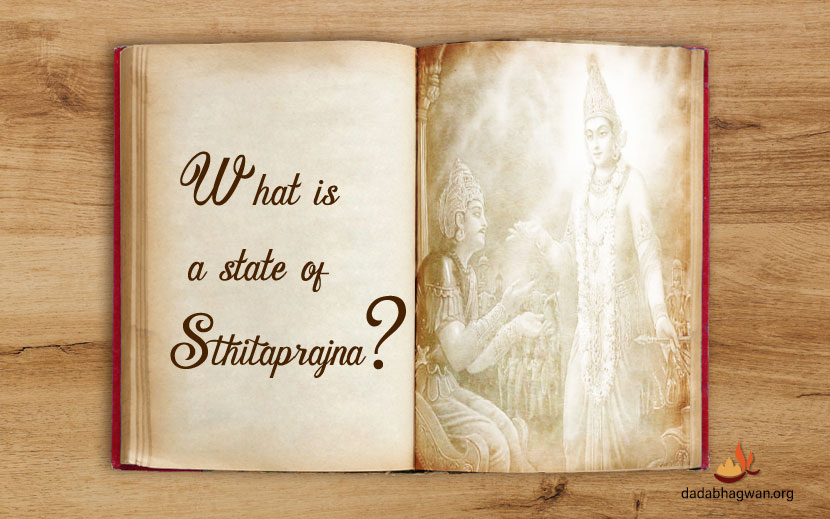What is sthitprajna according to the Shrimad Bhagvat Geeta?
Sthitaprajna
One day a great pundit (a religious scholar) came to test me. He asked me, "What is a state of sthitaprajna?" I explained to him, "You are in a state of sthita-agna. You are standing on this side of the bank so make the assessment yourself what the other bank of sthitaprajna must be like." I further said to him, "Do you want me to tell you what appeals to you or what offends you? You are in a state of nothing but sthita-agna; you go around in a state of intoxication from your scholarship. The intoxication of alcohol is better than your intoxication; at least with the former it goes down when you pour water over a drunk. Whereas you have made your intoxication permanent; it does not go down even during sleep. It is possible for you to attain salvation, having wandered endless lives, by doing 'our' darshan for only five minutes. Here, with 'us' (in us) it is possible to do darshan of any God you wish. Do darshan of anyone you wish."

Sthitaprajna is not a state of experience. Sthitaprajna begins from the moment you begin to make a differentiation through words when you say, "This is the Atma and it is separate from everything else." The state of sthitaprajna begins from the moment you utter the difference till the moment you attain the experience of the Soul (the Self). That is the state of sthitaprajna. The path that Lord Krishna has shown comes all the way to sthitaprajna, however there is a lot more beyond that. When 'we' give you the knowledge of the Self, you experience a state much higher than the state of sthitaprajna. There is tremendous difference between the state of sthitaprajna and attaining the Self. Sthitaprajna means to be stable in pragnya; but that is the relative pragnya (through the medium of intellect). After that one has to attain the experience of the Self. Our pragnya (real) is the one that is established after attaining the awareness of the Self, thereafter all matters are settled without raag-dwesh and a state of equanimity arises. Sthitaprajna means to recognize and know the attributes of the Self through the intellect that has become pure, but not the actual experience of these qualities. With the state of sthitaprajna, one knows and recognizes the universe and its elements; that verily is called the state of 'shuddha samkit'. However, the knowledge of the Self that 'we' give you, gives you the direct experience of the Self and that is called 'parmartha samkit', and with that state one sees, recognizes and experiences the universe and its elements.
One does not become emotional in the state of sthitaprajna, however this state does not lead one to a state of samadhi (uninterrupted bliss). Samadhi can only occur upon attaining the Self. When the illusion of 'I am *Chandulal' leaves, a state of samadhi occurs.
Which is the last station Lord Krishna refers to in the Gita? The state of sthitaprajna is the last station in the Gita. He says, "Attain the state of sthitaprajna," but people had to question, "What does sthitaprajna do?" The Lord had to explain what sthitaprajna is. That which becomes stable in pragnya; that which pushes away the non essence (the non-self) and makes you attain the essence (the Self) is sthitaprajna. And your state of the Shuddhatma (the Self) is much higher than the state of sthitaprajna.
Lord Krishna has written that if one becomes vitarag (free from all attachment), he will become fearless.
*Chandulal = Whenever Dadashri uses the name 'Chandulal' or the name of the person Dadashri is addressing, the reader should insert his or her name for exact understanding.
subscribe your email for our latest news and events





